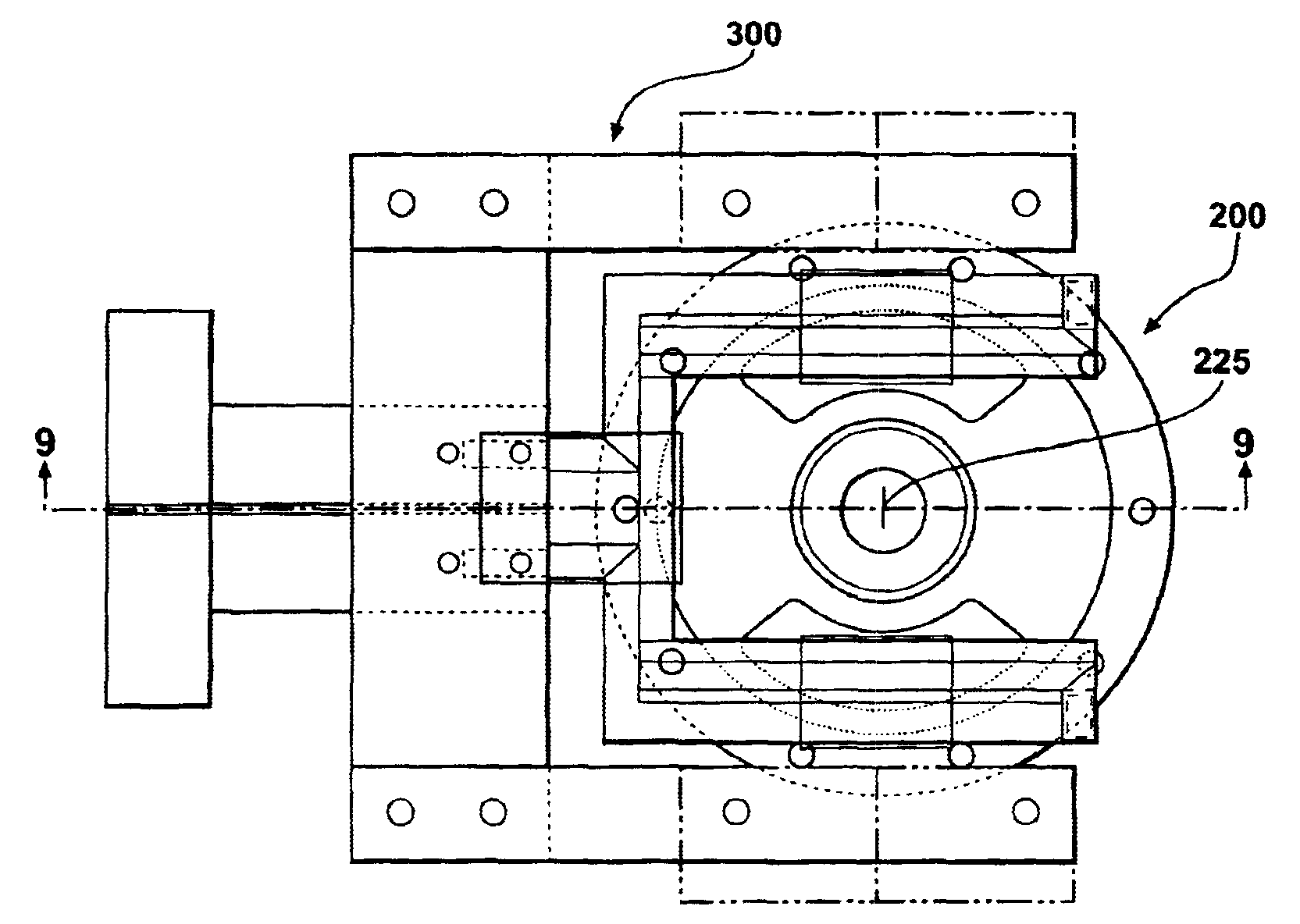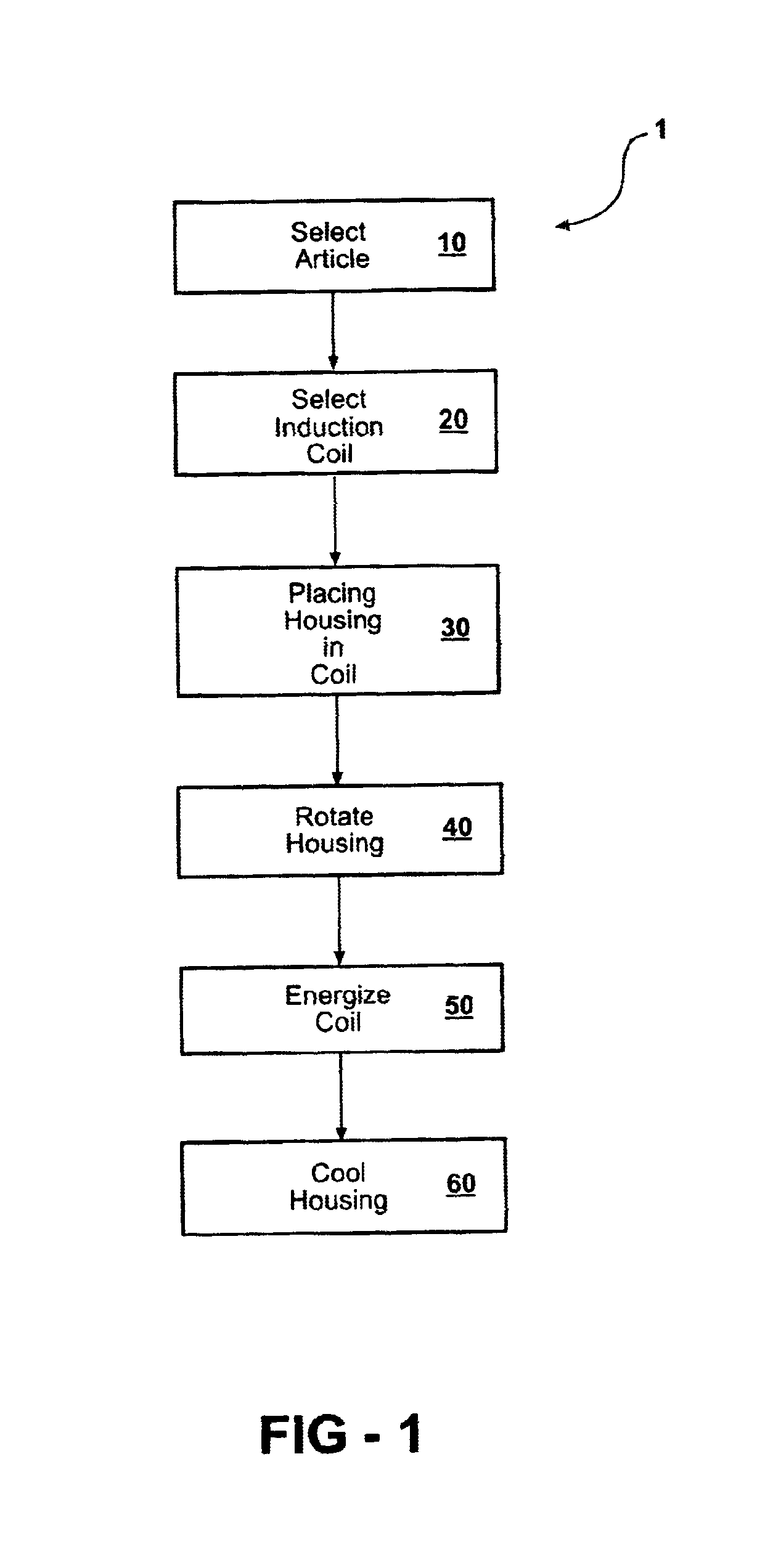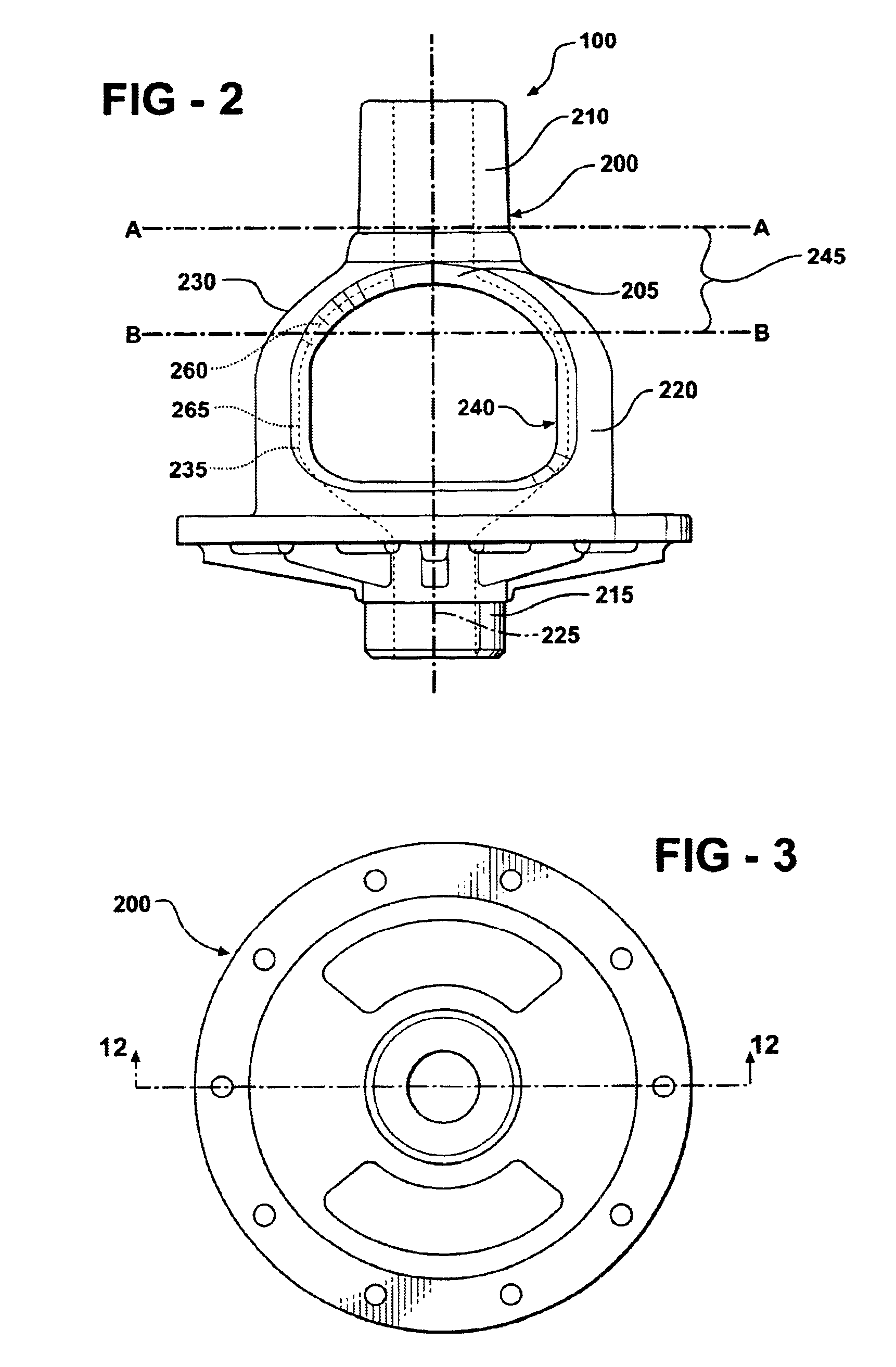Induction heat treatment method and coil and article treated thereby
a technology of induction heat treatment and coil and article, which is applied in the direction of electric/magnetic/electromagnetic heating, mechanical equipment, etc., can solve the problems of insufficient use of low torque handling capacity of housings, and inability to use induction hardening for various types of components, etc., to reduce the amount of grain growth or distortion, reduce the effect of heat treatment of the entire part and increase the strength of nodular cas
- Summary
- Abstract
- Description
- Claims
- Application Information
AI Technical Summary
Benefits of technology
Problems solved by technology
Method used
Image
Examples
Embodiment Construction
[0029]Referring to FIGS. 1-13, the present invention comprises a method 1 of induction heat treatment. Method 1 comprises the steps of: selecting 10 an article 100 for heat treatment, such as differential housing 200, comprising a metal wall 205 having an upper hub portion 210, a lower hub portion 215, a bell-shaped portion 220 that is located between the upper hub portion and the lower hub portion and a longitudinal axis 225 extending through each of the upper hub portion 210, lower hub portion 215 and bell-shaped portion 220, the bell-shaped portion 220 having a bell-shaped outer surface 230, an inner surface 235 and a plurality of windows 240 extending from the outer surface to the inner surface; selecting 20 an induction coil 300 comprising a hollow metal channel 305 having a first termination portion 310, a second termination portion 315 and a semi-rectangular inductor portion 320 that is operably connected to the first termination portion 310 and the second termination portion...
PUM
| Property | Measurement | Unit |
|---|---|---|
| frequency | aaaaa | aaaaa |
| thickness | aaaaa | aaaaa |
| outer height | aaaaa | aaaaa |
Abstract
Description
Claims
Application Information
 Login to View More
Login to View More - R&D
- Intellectual Property
- Life Sciences
- Materials
- Tech Scout
- Unparalleled Data Quality
- Higher Quality Content
- 60% Fewer Hallucinations
Browse by: Latest US Patents, China's latest patents, Technical Efficacy Thesaurus, Application Domain, Technology Topic, Popular Technical Reports.
© 2025 PatSnap. All rights reserved.Legal|Privacy policy|Modern Slavery Act Transparency Statement|Sitemap|About US| Contact US: help@patsnap.com



